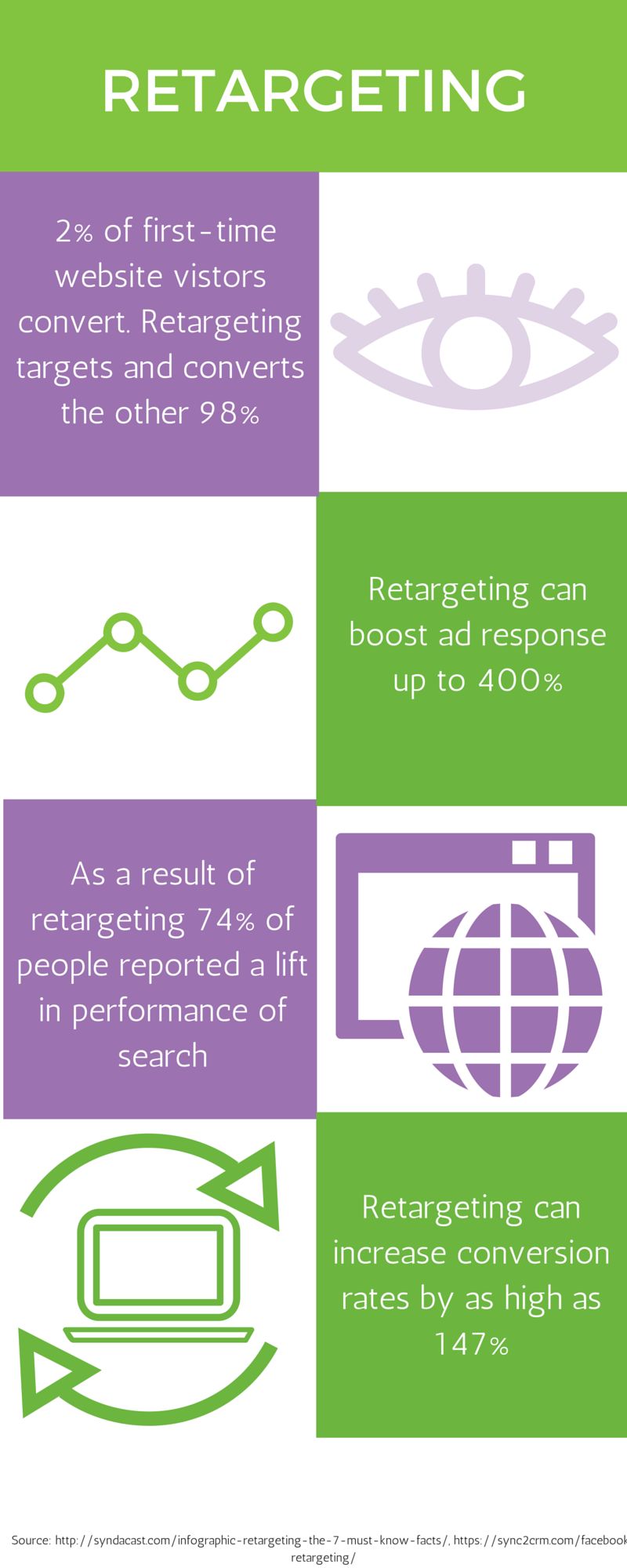How many times do you need to see an ad before you register your interest with a brand? Not many of us would answer 'once'. Thus a really effective way of re-messaging customers is by using Retargeting. If you aren't doing it already, it's time to get on-board! Retargeting works by clever data tracking of which people visit your website, read your emails and engage with your content. As the name would suggest, retargeting creates a conversation with your customers, providing reminders and prompts. It in turn converts "window-shoppers" into buyers.
Here are 5 different types of Retargeting worth trying:
1/Paid Search Retargeting: When using search retargeting, you’re essentially going after individuals on search engines who have searched using keywords or phrases relevant to your business. When using this type of retargeting, you're making assumptions based on the searcher’s intent.
2/Email Retargeting: As apparent from the name, you can retarget people based on actions they have taken on your emails. For example a person that opens your email can be retargeting with performance display banners.
3/Contextual Retargeting: In essence this involves exchanging cookies between sites that are highly relevant to a searcher and targeting to each other’s visitors. For example, think of an airline and local hotel site targeting each other’s audience based on destinations that were searched or booked. This can have some privacy concerns to be considered before trying.
4/Engagement/Creative Retargeting: This type of retargeting happens in real-time, whereby the advertiser reacts to way that a consumer engages with their media. It can work very well if the advertiser wants to take the consumer on a journey, showing a series of messages.
5/Website Retargeting: Website retargeting works by having a tracking tag placed onto your website. This code then creates an anonymous list of people who visit your site by placing "cookies" in their browser. This list allows a retargeting vendor to display your customised ads to potential customers as they visit other sites.

Email: sayhello@digitalwillow.biz
Phone: +44 (0) 207 183 6351
